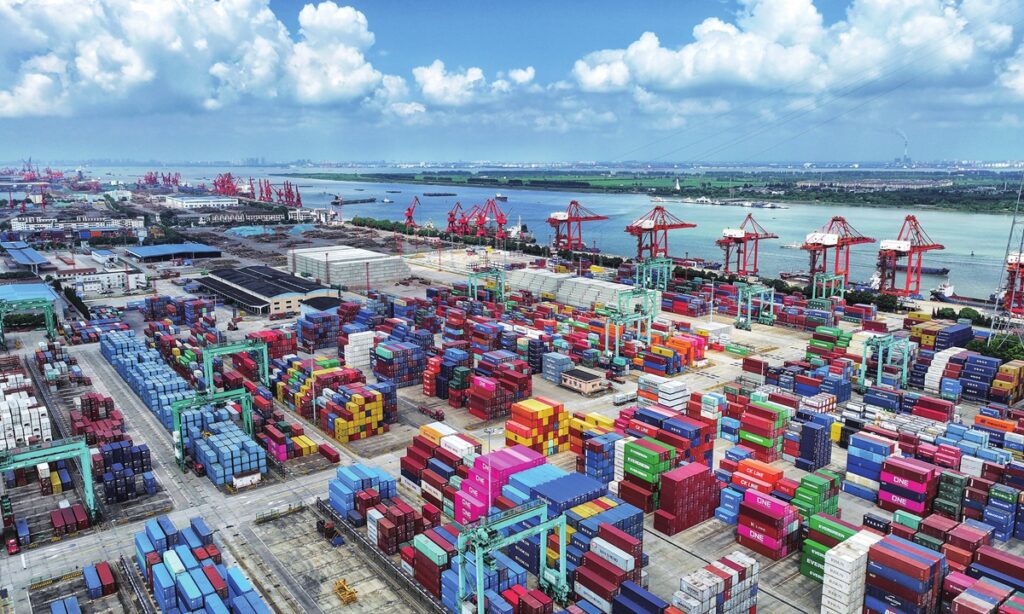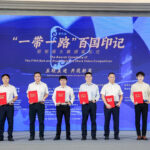Sector likely to bottom out in Q3 as Chinese economy continues to recover: expert
China’s imports and exports beat expectations to sustain an upward trajectory in August, as the country’s foreign trade structure continued to improve with a competitive edge while a host of targeted measures to bolster the economy showed results.
Experts said that trade will maintain stable growth for the rest of the year despite a volatile international environment, and will very likely bottom out in the third quarter.
In yuan-denominated terms, foreign trade fell 2.5 percent year-on-year to 3.59 trillion yuan ($490.16 billion) in August, but it grew 3.9 percent month-on-month, according to data released by the General Administration of Customs (GAC) on Thursday.
Last month, exports rose 1.2 percent month-on-month to reach 2.04 trillion yuan, while imports rose 7.6 percent to reach 1.55 trillion yuan, the data showed.
The export data beat Reuters’ consensus forecast of a 9.2 percent contraction and was also better than the decline in July, when exports fell 9.2 percent year-on-year.
In the first eight months, foreign trade totaled 27.08 trillion yuan, slightly down 0.1 percent year-on-year, but still at a relatively high level, according to the GAC.
“The import and export figures were better than anticipated, since analysts had expected that foreign trade might further drop in August due to mounting external challenges. The latest figures indicate an increasingly stable growth trend,” Huo Jianguo, a vice chairman of the China Society for World Trade Organization Studies in Beijing, told the Global Times on Thursday.
As the domestic economy continues to recover with the stimulus of a series of robust policies, Chinese companies’ capabilities of resisting risks and exploring markets are being further strengthened.
The resilience and competitiveness of domestic exporters are an important factor supporting the country’s exports, Huo said.
Trade by private companies grew by 6 percent year-on-year in the first eight months to reach 14.33 trillion yuan, accounting for 52.9 percent of the country’s total. That’s an increase of 3 percentage points compared with the same period last year, according to the GAC.
The improvement in the external environment contributed to the month-on-month growth of China’s foreign trade, as the slump in China-US trade showed slight signs of improvement, Bai Ming, deputy director of the international market research institute at the Chinese Academy of International Trade and Economic Cooperation, told the Global Times on Thursday.
Over the period, ASEAN remained the largest trade partner of China, with bilateral trade up 1.6 percent year-on-year to total 4.11 trillion yuan. China-US bilateral trade dropped 8.7 percent year-on-year in the first eight months, narrowing 0.9 percentage points compared with the first seven months, according to the GAC.
Trade with countries and regions participating in the Belt and Road Initiative (BRI) rose by 3.6 percent year-on-year to reach 12.62 trillion yuan, GAC data showed.
Experts said the import and export data for August showed that the country’s economy is well on a track of recovery, frustrating those who bad-mouth China’s economic prospects and hype the so-called “China collapse” theory.
“Foreign trade is expected to bottom out in the third quarter, as export-oriented companies are preparing for the ‘busy season’ in September and October, while imports will grow steadily along with the continuous release of domestic demand,” Tu Xinquan, dean of the China Institute for WTO Studies at the University of International Business and Economics in Beijing, told the Global Times on Thursday.
Although US-led Western protectionism poses challenges to China’s exports, China’s unique advantage of complete industrial chains makes the country irreplaceable in the global industry and supply chains, Tu said, pointing to China’s rapid upgrade of capital- and technology-intensive industries.
Exports of machinery products increased by 3.6 percent year-on-year in the first eight months to 8.97 trillion yuan, accounting for 58 percent of total exports. Car exports were up 104.4 percent year-on-year to 442.7 billion yuan, according to the GAC.
In addition, Tu said that the BRI plays an active role in boosting infrastructure connectivity and promoting trade ties. As this year marks the 10th anniversary of the BRI, the third Belt and Road Forum for International Cooperation to be held in Beijing in October will further increase the connectivity between China and those countries participating in the BRI.
(Global Times)




